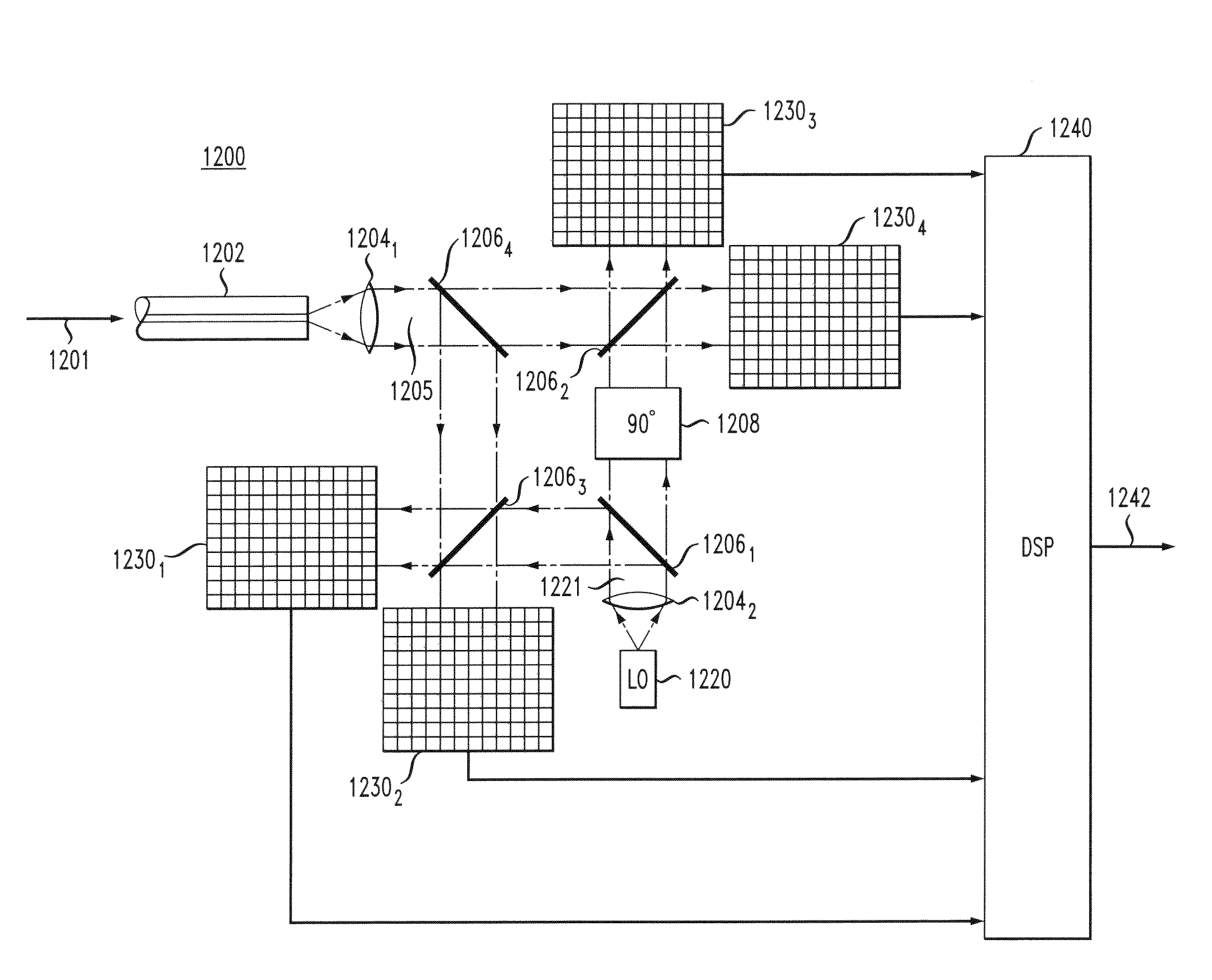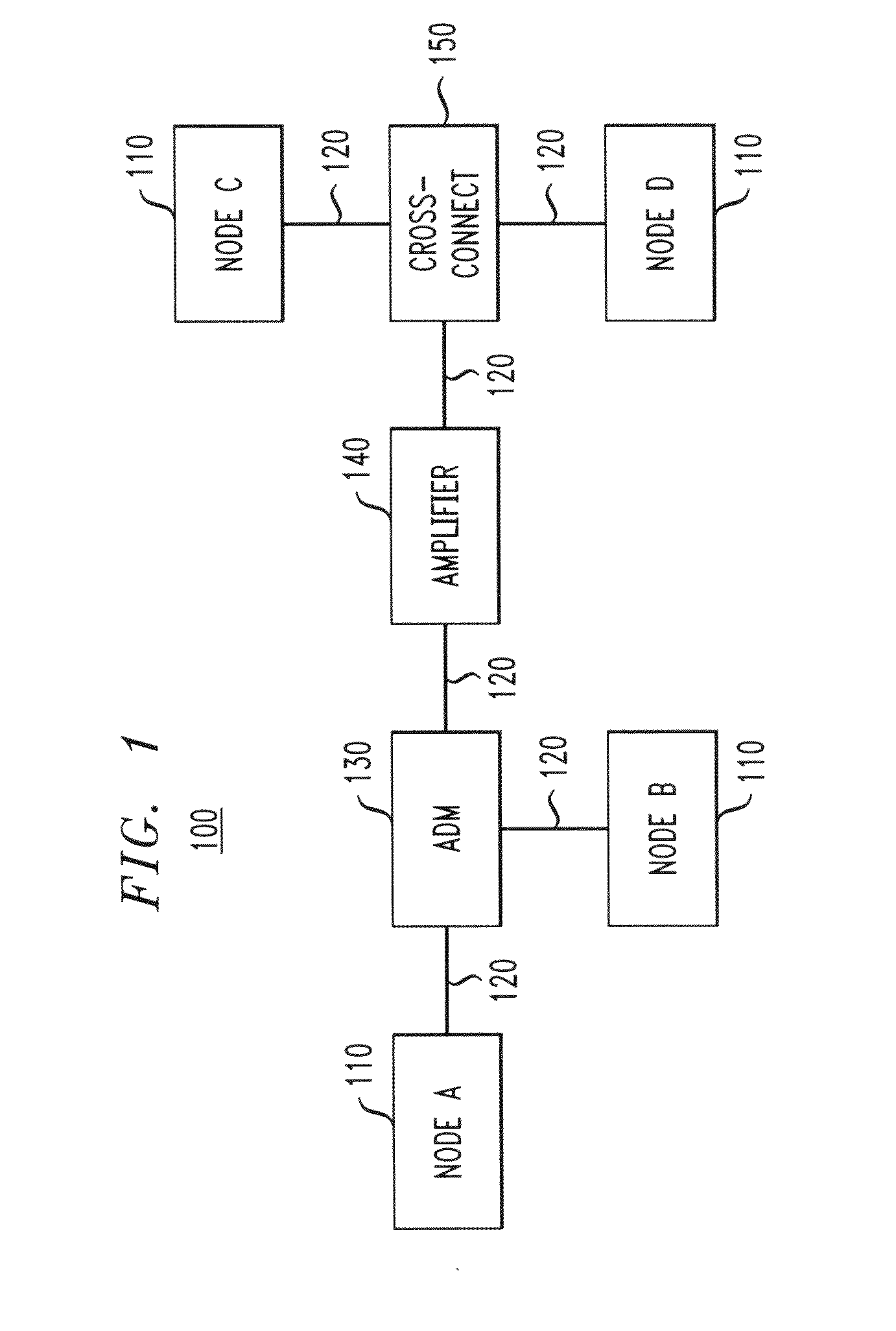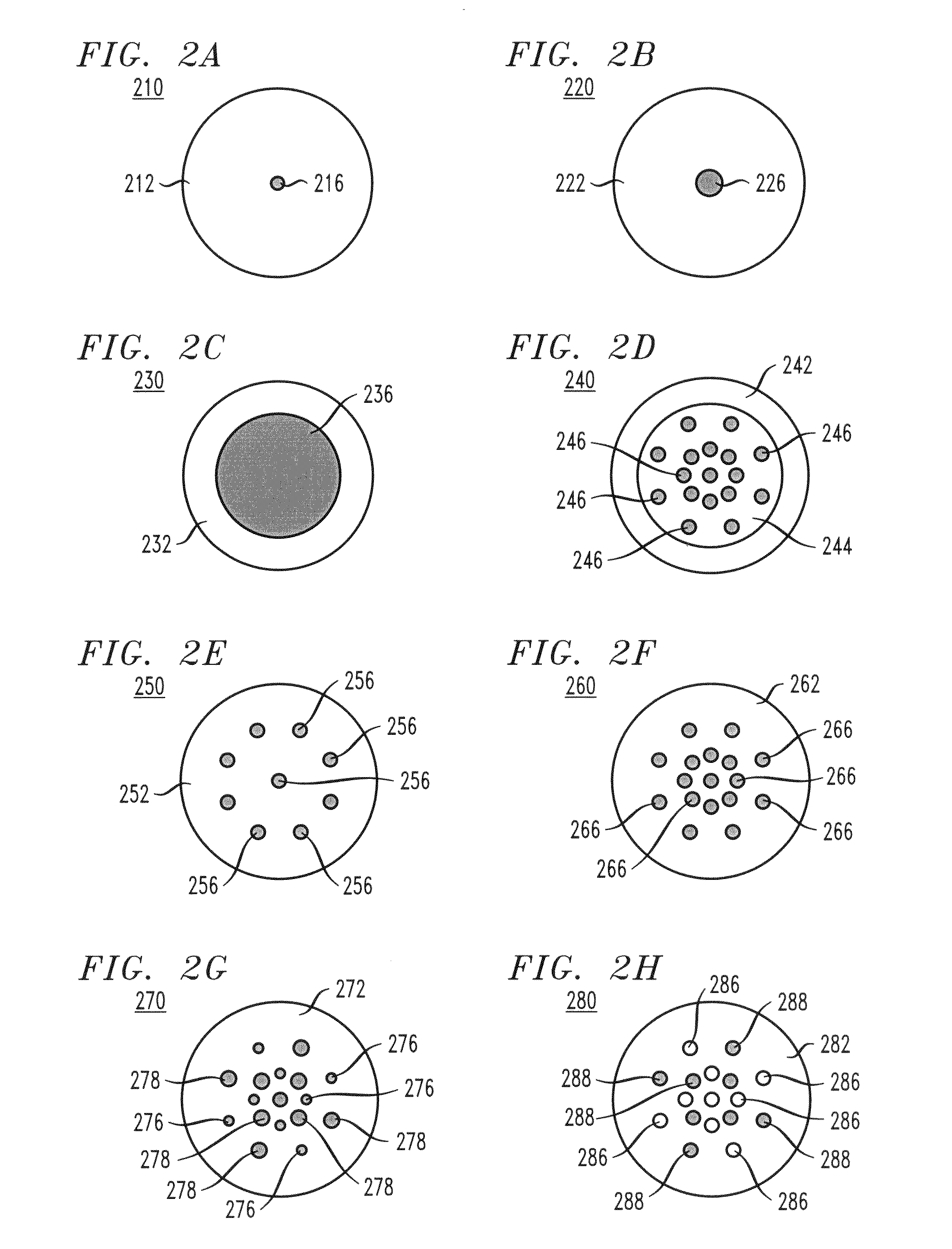Transverse-mode multiplexing for optical communication systems
a technology of optical communication system and transverse mode, applied in multiplex communication, instruments, optical elements, etc., can solve the problem that the hardware for implementing optical mimo is not yet sufficiently developed
- Summary
- Abstract
- Description
- Claims
- Application Information
AI Technical Summary
Benefits of technology
Problems solved by technology
Method used
Image
Examples
Embodiment Construction
[0026]FIG. 1 shows a block diagram of an optical communication system 100, in which various embodiments of the invention can be practiced. System 100 has a plurality of communication nodes 110 interconnected via a network of optical communication links 120. System 100 further has an optical add / drop multiplexer (ADM) 130, an optical amplifier 140, and an optical cross-connect 150, all variously interposed between nodes 110.
[0027]Each node 110 has optical multiple-input multiple-output (MIMO) capabilities achieved through the use of transverse-mode multiplexing (TMM). Node110 generally includes an optical transmitter and an optical receiver (neither is explicitly shown in FIG. 1) to enable two-way communications between various nodes of system 100. In addition to TMM multiplexing, an individual node 110 might also use wavelength-division multiplexing (WDM) and / or polarization multiplexing (PM), or both. Representative embodiments of an optical transmitter ...
PUM
 Login to View More
Login to View More Abstract
Description
Claims
Application Information
 Login to View More
Login to View More - R&D
- Intellectual Property
- Life Sciences
- Materials
- Tech Scout
- Unparalleled Data Quality
- Higher Quality Content
- 60% Fewer Hallucinations
Browse by: Latest US Patents, China's latest patents, Technical Efficacy Thesaurus, Application Domain, Technology Topic, Popular Technical Reports.
© 2025 PatSnap. All rights reserved.Legal|Privacy policy|Modern Slavery Act Transparency Statement|Sitemap|About US| Contact US: help@patsnap.com



